DIET:
- Begin with clear liquids and light foods (jello, soup, etc.). Progress to normal diet as tolerated if you are not nauseated.
- Avoid greasy or spicy foods for the first 24hrs to avoid GI upset.
- Increase fluid intake (water, Gatorade, etc.) to help prevent constipation.
ANESTHESIA:
- The anesthesia team may have placed a nerve block prior to surgery to help with post-operative pain control. As a consequence, you may have numbness or inability to move the limb after surgery. Do not be alarmed as this may last 8-36 hours depending upon the amount and type of medication used by the anesthesiologist.
- If you are experiencing numbness after 36 hours, please call the office.
- When the nerve block begins to wear off, you will feel a tingling sensation, like pins and needles. It is important that you start taking the pain medication at that time to ensure that you stay ahead of the pain.
PRESCRIBED MEDICATIONS:
- Narcotic pain medicine (Percocet or Norco): may cause constipation, nausea, itching, and excessive drowsiness. You should take an over-the-counter stool softener (Colace and/or Senna) while taking narcotics to prevent constipation, but stop if you develop diarrhea. If you experience itching, over the counter Benadryl may be helpful. Narcotic pain medications often produce drowsiness and it is against the law to operate a vehicle while taking these medications.
- Anti-inflammatory (NSAID) medicine (Naprosyn or Mobic): do NOT take this medication if you have had an ulcer in the past unless you have cleared this with you primary care doctor. You should take NSAIDs with food to reduce the chance of upset stomach.
- Anti-nausea medicine (Zofran): sometimes patients experience nausea related to either anesthesia or the narcotic pain medication. If this is the case you will find this medication helpful.
- DVT prophylaxis (Aspirin, Xarelto, Lovenox, or Coumadin): For most patients, activity alone is sufficient to prevent dangerous blood clots, but in some cases your personal risk profile and/or the type of surgery you have undergone makes it necessary that you take medication to help prevent blood clots.
- Stool softener (Colace and/or Senna): are available over the counter at your local pharmacy and should be taken while you are taking narcotic pain medication to avoid constipation. You should stop taking these medications if you develop diarrhea. Over the counter laxatives may be used if you develop painful constipation
ICE:
- Ice is a very important part of your recovery. It helps reduce inflammation and improves pain control. You should ice several times each day for 30 minutes at a time. Please make sure there is a thin piece of material (sheet or towel) between the ice and your skin.
- If you opted for one of the commercially available ice machines and a compression setting is available, you should use LOW or no compression during the first 5 days. After that, you may increase compression setting as tolerated. If the compression is bothering you then do not use compression.
- Ice as much as possible (30 minutes on, 30 minutes off, etc.). The more you ice during the first 2 weeks, the less pain, swelling, and inflammation you will experience.
- If you have a known diagnosis of RSD or CRPS, please discuss with Dr. Taylor before using ice.
BANDAGES:
- You may remove the outer dressing after 3 days.
- Do NOT remove Steri-strips if present.
- Steri-strips may come off on their own, which is normal.
INCISION:
- Keep your incision clean and dry until your first postoperative visit, approximately 10-14 days after surgery. Do NOT get incisions wet as this increases the risk of developing an infection.
- After the bandage has been removed, you may leave the incisions open to air. Alternatively, if you prefer to keep them covered, you may do so with Band-Aids, a light gauze dressing, or a clean ACE wrap.
- Do NOT apply any ointment or creams to the incision.
- Do NOT clean the incision.
CONSTIPATION
Begin the following if no bowel movement by 3 days after surgery. All of the medications listed below can be obtained from your local pharmacy over-the-counter. Stop if you develop diarrhea. Patients under age 18 should NOT use this regimen.
- Postoperative Day 4-5: Colace 100mg caps 3 times per day AND Senna 2 tabs at bedtime. Increase by 2 tabs at mealtimes up to a maximum of 8 tabs per day if no bowel movement.
- Postoperative Day 6: Continue above medications AND add Milk of Magnesia 30ml (2 tablespoons) 1-2 times per day.
- Postoperative Day 7: Continue above medications AND add a Biscodyl rectal suppository or try a Fleets enema.
SHOWER:
- You may shower after the bandage has been removed (3 days), but it is very important that you keep sutures dry. Covering them with saran wrap is often a very inexpensive and effective way to stay dry. There are a number of other water-repellent bandages available at your local pharmacy that works as well.
- You may remove your sling or brace to shower, unless otherwise instructed. As your balance may be affected by recent surgery, we recommend placing a plastic chair or bench in the shower to help prevent falls.
- Do NOT take baths, go into a pool, or soak the operative site until approved by Dr. Taylor at your first postoperative visit.
PHYSICAL THERAPY:
- You do not need to start any formal physical therapy unless otherwise instructed by Dr. Taylor. If he would like you to start physical therapy before your first post-operative visit, then you will be provided with a prescription.
DRIVING:
- You may drive when you are (1) no longer wearing a sling or knee brace on the right leg and (2) when you are no longer taking narcotic pain medication.
- It is against the law to drive while wearing (or should be wearing) a sling on either upper extremity or a brace on the right lower extremity.
- It is against the law to drive while taking any narcotic pain medication (even when legally prescribed).
TRAVEL:
- Avoid long distance traveling after surgery. It is important to discuss your travel plans with Dr. Taylor, as additional medications may need to be prescribed to help prevent blood clots if certain travel is unavoidable.
RETURNING TO WORK OR SCHOOL:
- Typically, you may return to sedentary work or school 3-7 days after surgery if pain is tolerable and you are no longer requiring narcotic pain medication during work/school hours.
- Taylor will determine when you may return to more physically rigorous demands.
- If you require any specific letters for work or school please let us know.
NORMAL SENSATIONS AND FINDINGS AFTER SURGERY:
- PAIN: surgery hurts. We do everything possible to make your pain/discomfort level tolerable, but some amount of pain is to be expected.
- WARMTH: mild amount of warmth around the operative site is normal for up to 3 weeks.
- REDNESS: small amount of redness where the sutures enter the skin is normal. If redness worsens or spreads it is important that you contact the office.
- DRAINAGE: a small amount is normal for the first 48-72 hours. If wounds continue to drain after this time, you need to contact the office.
- NUMBNESS: around the incision is common.
- BRUISING: is common and often tracks down the arm or leg due to gravity and results in an alarming appearance, but is common and will resolve with time.
- FEVER: low-grade fevers (less than 101.5°F) are common during the first week after surgery. You should drink plenty of fluids and breathe deeply. A low-grade temperature is normal for a week after the surgery.
PLEASE BE ADVISED OF THE FOLLOWING:
Most orthopedic surgical procedures are uneventful. However, complications can occur. The following are things to be aware of in the immediate postoperative period.
- FEVER – Low-grade fever is common after orthopaedic surgery, particularly within the first 5 days. Please notify Dr. Taylor if your temperature rises above 101.5ºF.
- BLEEDING – It is fairly common to have minor bleeding that can even soak through the bandages. Notify us if the wound drains any fluid more than 4 days after surgery.
- CARDIOVASCULAR – Chest pain, shortness of breath, palpitations, or fainting spells must be taken seriously. Go to the emergency room (or call 911) immediately for evaluation. Someone should notify both Dr. Taylor and your primary care doctor.
- BLOOD CLOTS – Orthopaedic surgery patients are at risk for blood clots. While the risk is higher for lower extremity surgery, even those who have undergone upper extremity surgery are at an increased risk. Please notify Dr. Taylor if you or someone in your family has had blood clots or any type of known clotting disorder.
- Obesity or use of oral contraceptives can increase the risk of blood clots. Women should consider stopping oral contraceptive use until able to walk normally without crutches, brace, or cast on the leg.
- Traveling after surgery – Long flights or car trips may increase the chance of blood clots. If you need to travel in the first 4 weeks after surgery, please inform us so that addition medication may be prescribed as necessary.
- Signs of blood clots may include calf pain or cramping, diffuse swelling in the leg and foot, or chest pain and shortness of breath. Please call if you recognize any of these symptoms. There is noninvasive testing available to rule out this potentially life threatening condition.
- CONSTIPATION – It is common to become constipated from taking narcotic pain medications so you may need to use a stool softener or laxative. These are available over the counter at any pharmacy.
NOTIFY US IMMEDIATELY FOR ANY OF THE FOLLOWING:
- Temperature greater than 101.5°F.
- Severe nausea, vomiting, diarrhea, or constipation.
- Chest pain or shortness of breath (go to ER).
- Sutures become loose or fall out and incision becomes open.
- Change is noted to your incision (increased redness or drainage).
- Drainage persists greater than 4 days or becomes yellow or foul smelling.
- Increased pain unrelieved by medication or measures mentioned above.
FOLLOW-UP:
- Follow-up appointment should be arranged for 10-14 days after surgery. If one has not been provided, please call the office to schedule.

